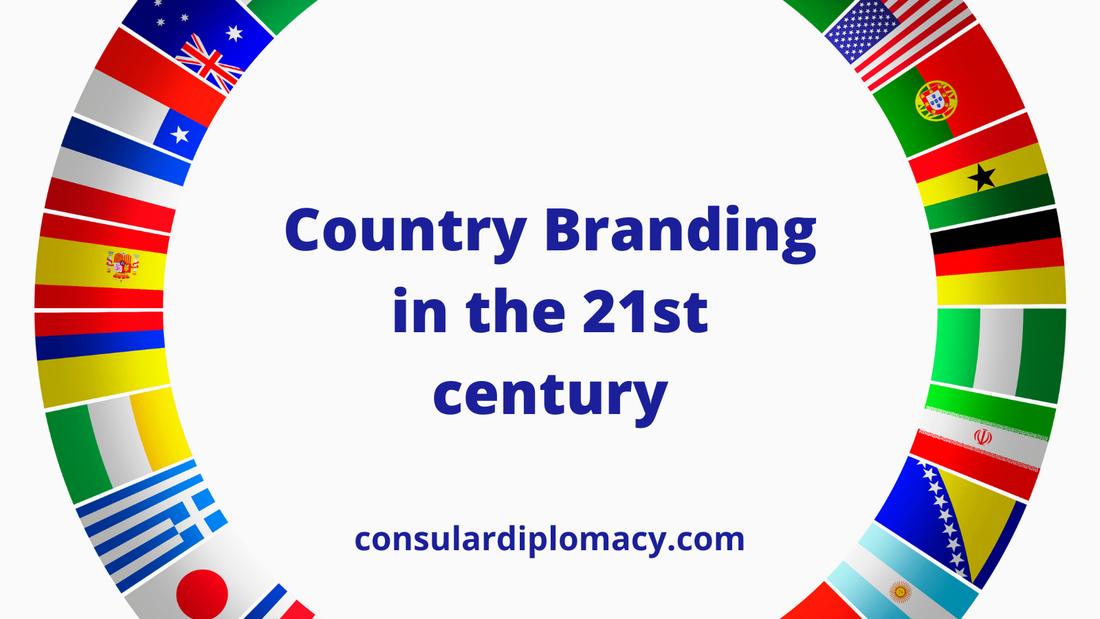 As I mentioned before, I am working on two projects. The first is about global politics. In the previous post, I wrote about the changes in the international system that we are experiencing today. It included some incredible works that I found that make it easier to comprehend these transformations. The second assignment is about public diplomacy and country branding. So, today I am going to write about the latter. I prefer using the term country branding, as it seems more encompassing than nation branding because most states are multination countries, so that a few groups might feel excluded. Other expressions such as place branding, location, and even reputation management are now used as an alternative to nation branding. In one of the blog´s first posts, “Influence and reputation in international affairs: Soft Power and Nation Branding,” I wrote about the differences between public diplomacy, nation brand, and soft power. For me, it was an excellent exercise because there is still much confusion about the three concepts. Even in a textbook focused on public diplomacy, such as the Routledge Handbook on Public Diplomacy (2nd edition), there are a few articles about nation branding, which I really enjoyed, by the way. A lot has happened since Simon Anholt coined the term Nation Brand in 1996. While the first decade of the new millennium seemed to be all about trying to promote a country`s reputation via flashy logos, catchy slogans, expensive spreads in magazines like The Economist, things have seemed to evolve in recent years. I bet that many governments worldwide finally realized that while the country’s image abroad is one of the greatest assets, it cannot be changed using marketing and advertising techniques or spending vast amounts of money on its promotion. In the article “Country Branding: A Practitioner Perspective,”[i] Florian Kaefer, Founder of The Place Brand Observer, details the transformation of place branding from its early heydays to a mature discipline. He just published the book An Insider´s Guide to Place Branding: Shaping the Identity and Reputation of Cities, Regions and Countries, which I hope to read soon because it seems fascinating as it is based on interviews of a significant number of place branding practitioners. The digital world has also changed country branding, including the development of the Digital Country Index of online searches to the creation of the concept of “Selfie Diplomacy.” The Digital Country Index is intriguing as the people search proactively about a country; therefore, there is an assumption of specific interest in a particular nation, which is a measurement of its online attractiveness. However, people worldwide may be searching for a specific country for the wrong reasons from a country branding perspective. Natural or man-made disasters, bad COVID-19 management, or some bad news might not be what the branding manager wants the public to know about the country. For example, just a few days ago, the world focused on Tonga, a Pacific Ocean nation, because of a devastating volcano eruption. So, the online searches index, while usefully, most be treated carefully. As previously mentioned, another example of the changes that place branding experiences in cyberspace is the appealing idea of “Selfie Diplomacy” created by Ilan Manor and Elad Segev. It is defined as “an MFA´s use of social media channels to author a national self-portrait or brand… [and] is thus a form of nation branding conducted via digital platforms”[ii]. It is a country´s digital identity used to broadcast the image that it wants to project in the digital realm. The concept is very intriguing, as everybody now does Selfies. This is just the country´s selfies in the digital realm. Two countries that have stand out in nation branding are Estonia and Costa Rica. Both share the fact that an independent organism coordinates the branding efforts: Enterprise Estonia and Essential Costa Rica. The Baltic national focused on digitalization, including its E-Residency program, while Costa Rica has become a green powerhouse, both activities being at the core of their branding programs. [iii] Something that has not changed is the obsession with indexes. Now, there are so many that it is impossible to keep up with them or even understand the methodology used to rank countries. Here is a brief recompilation of some of them:
For those interested in place branding, there is the International Place Branding Association that offers courses and organizes an annual meeting. It is led by Robert Govers, author of the book Imaginative Communities: Admired cities, regions, and countries. Membership is free, you just have to enroll in their newsletter. Talk about openness! If you are interested in Mexico´s country brand, read the blog post Broken funhouse mirror: Mexico´s image and reputation abroad. [i] Kaefer, Florian. (2019). Country Branding: A Practitioner Perspective. Routledge Handbook on Public Diplomacy (2nd edition) Nancy Snow and Nicholas J. Cull (eds.), pp 129-136. Routledge [ii] Manor, Ilan. (2019). The Digitalization of Public Diplomacy. Palgrave Macmillan, p. 263. See also, Manor Ilan and Segev, Elad. (2015). America´s selfie: How the US portrays itself on its social media accounts. In C Bjola & M Holmes (eds.) Digital diplomacy: Theory and Practice. Routledge. Available at https://digdipblog.files.wordpress.com/2014/02/americas-selfie.pdf [iii] City/Nation/Place (2020) Two countries that prove nation branding works, 10 January. Available at https://www.citynationplace.com/two-countries-that-prove-nation-branding-works [accessed 26 December 2021] DISCLAIMER: All views expressed on this blog are that of the author and do not represent the opinions of any other authority, agency, organization, employer or company.
0 Comments
Your comment will be posted after it is approved.
Leave a Reply. |
Rodrigo Márquez LartigueDiplomat interested in the development of Consular and Public Diplomacies. Archives
May 2024
Categories
All
|
